Normal formation of a vertebrate body plan and loss of tissue maintenance in the absence of ezh2
- PMID: 27145952
- PMCID: PMC4857124
- DOI: 10.1038/srep24658
Normal formation of a vertebrate body plan and loss of tissue maintenance in the absence of ezh2
Abstract
Polycomb group (PcG) proteins are transcriptional repressors of numerous genes, many of which regulate cell cycle progression or developmental processes. We used zebrafish to study Enhancer of zeste homolog 2 (Ezh2), the PcG protein responsible for placing the transcriptional repressive H3K27me3 mark. We identified a nonsense mutant of ezh2 and generated maternal zygotic (MZ) ezh2 mutant embryos. In contrast to knockout mice for PcG proteins, MZezh2 mutant embryos gastrulate seemingly normal, but die around 2 days post fertilization displaying pleiotropic phenotypes. Expression analyses indicated that genes important for early development are not turned off properly, revealing a regulatory role for Ezh2 during zygotic gene expression. In addition, we suggest that Ezh2 regulates maternal mRNA loading of zygotes. Analyses of tissues arising later in development, such as heart, liver, and pancreas, indicated that Ezh2 is required for maintenance of differentiated cell fates. Our data imply that the primary role of Ezh2 is to maintain tissues after tissue specification. Furthermore, our work indicates that Ezh2 is essential to sustain tissue integrity and to set up proper maternal mRNA contribution, and presents a novel and powerful tool to study how PcG proteins contribute to early vertebrate development.
Figures

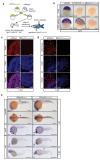
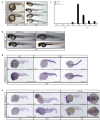
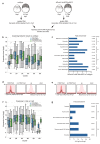
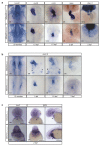
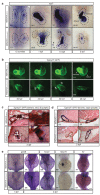
Similar articles
-
The ezh2(sa1199) mutant zebrafish display no distinct phenotype.PLoS One. 2019 Jan 24;14(1):e0210217. doi: 10.1371/journal.pone.0210217. eCollection 2019. PLoS One. 2019. PMID: 30677064 Free PMC article.
-
Maintenance of spatial gene expression by Polycomb-mediated repression after formation of a vertebrate body plan.Development. 2019 Sep 30;146(19):dev178590. doi: 10.1242/dev.178590. Development. 2019. PMID: 31488564 Free PMC article.
-
The histone lysine methyltransferase Ezh2 is required for maintenance of the intestine integrity and for caudal fin regeneration in zebrafish.Biochim Biophys Acta Gene Regul Mech. 2017 Oct;1860(10):1079-1093. doi: 10.1016/j.bbagrm.2017.08.011. Epub 2017 Sep 5. Biochim Biophys Acta Gene Regul Mech. 2017. PMID: 28887218
-
[The biological complexity of Polycomb group proteins: the case of EZH2].Med Sci (Paris). 2017 May;33(5):499-505. doi: 10.1051/medsci/20173305013. Epub 2017 Jun 14. Med Sci (Paris). 2017. PMID: 28612725 Review. French.
-
EZH2 as an Epigenetic Regulator of Cardiovascular Development and Diseases.J Cardiovasc Pharmacol. 2021 Aug 1;78(2):192-201. doi: 10.1097/FJC.0000000000001062. J Cardiovasc Pharmacol. 2021. PMID: 34029268 Review.
Cited by
-
The round goby genome provides insights into mechanisms that may facilitate biological invasions.BMC Biol. 2020 Jan 28;18(1):11. doi: 10.1186/s12915-019-0731-8. BMC Biol. 2020. PMID: 31992286 Free PMC article.
-
Ezh1 arises from Ezh2 gene duplication but its function is not required for zebrafish development.Sci Rep. 2019 Mar 13;9(1):4319. doi: 10.1038/s41598-019-40738-9. Sci Rep. 2019. PMID: 30867490 Free PMC article.
-
Chromatin dynamics at the maternal to zygotic transition: recent advances from the zebrafish model.F1000Res. 2020 Apr 28;9:F1000 Faculty Rev-299. doi: 10.12688/f1000research.21809.1. eCollection 2020. F1000Res. 2020. PMID: 32528656 Free PMC article. Review.
-
PRC2 functions in development and congenital disorders.Development. 2019 Oct 1;146(19):dev181354. doi: 10.1242/dev.181354. Development. 2019. PMID: 31575610 Free PMC article. Review.
-
The ezh2(sa1199) mutant zebrafish display no distinct phenotype.PLoS One. 2019 Jan 24;14(1):e0210217. doi: 10.1371/journal.pone.0210217. eCollection 2019. PLoS One. 2019. PMID: 30677064 Free PMC article.
References
Publication types
MeSH terms
Substances
LinkOut - more resources
Full Text Sources
Other Literature Sources
Molecular Biology Databases

